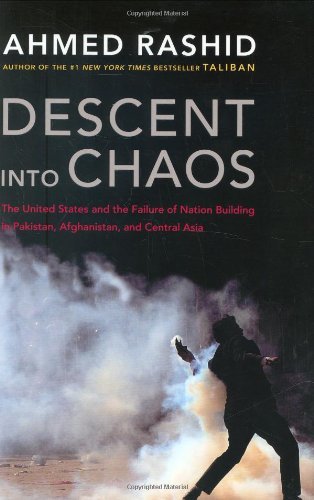
Ghost Wars: The Secret History of the CIA, Afghanistan, and Bin Laden from the Soviet Invasion to September 10, 2001
Book Description
A shadowy realm of spies, betrayal, and shifting alliances unfolds in "Ghost Wars," where the unpredictable landscape of Afghanistan becomes the battleground for global power. Steve Coll unveils the clandestine maneuvers of the CIA as it navigates the chaos of the Soviet invasion, shaping future threats while sowing the seeds of extremism. Through the rise of figures like Osama bin Laden, the narrative weaves a tapestry of ambition and catastrophe, culminating on the eve of September 11, 2001. As the world teeters on the brink of a new era, can the ghosts of past wars ever truly be laid to rest?
Quick Book Summary
"Ghost Wars" by Steve Coll offers a comprehensive, investigative account of the covert operations and geopolitical maneuvering that defined Afghanistan’s recent history and set the stage for modern terrorism. Coll delves into the CIA’s engagement in Afghanistan, from aiding the mujahideen during the Soviet invasion to the complex web of alliances and betrayals in the years that followed. The narrative tracks the emergence of extremist groups, especially as policy missteps and underestimations led to the rise of Osama bin Laden and Al-Qaeda. Coll’s meticulous research uncovers how U.S. intelligence priorities often clashed, bureaucratic infighting weakened responses, and opportunities were missed to prevent greater tragedies. As the September 11 attacks loom, "Ghost Wars" exposes how history, secrecy, and unintended consequences converged to shape the modern world.
Summary of Key Ideas
Table of Contents
The unintended consequences of foreign intervention
The Soviet invasion of Afghanistan in 1979 set a global chessboard in motion. The United States, seeking to counter Soviet influence, covertly funded and armed Afghan mujahideen through the CIA and its regional allies like Pakistan’s Inter-Services Intelligence (ISI). This clandestine support helped bleed the Soviet Union but had significant, unforeseen consequences—ushering in an era of militant jihad and complex power dynamics within Afghanistan, with the seeds of future instability quietly taking root.
The rise and radicalization of militant Islam in Afghanistan
As Soviet forces withdrew, Afghanistan was plunged into a brutal civil war, with the CIA’s former clients fracturing into warring factions. Pakistan and Saudi Arabia exploited the vacuum to push their own religious and strategic agendas, further radicalizing the region. Emerging from this chaos was Osama bin Laden, once a peripheral figure but increasingly influential. Coll details how superpower disengagement, regional manipulation, and desperation allowed figures like bin Laden to establish networks that evolved into terrorist organizations, including Al-Qaeda.
Bureaucratic rivalries and intelligence failures
Meanwhile, U.S. policymakers and intelligence agencies struggled with interdepartmental rivalry and bureaucratic inertia. The CIA, State Department, and White House often clashed over priorities in Afghanistan, resulting in missed warnings and fractured responses. Coll highlights how these internal divisions, combined with a lack of contextual understanding, led to critical intelligence failures and a failure to fully grasp the implications of radicalization and bin Laden’s ambitions.
Osama bin Laden’s emergence and growing threat
Bin Laden’s rise as a global jihadi icon was marked by audacious attacks in East Africa and Yemen. Despite mounting evidence of his threats and the growing reach of Al-Qaeda, American responses remained muddled. Opportunities to neutralize bin Laden—via local allies or direct action—were repeatedly missed, stymied by legal, political, and operational constraints. Coll meticulously documents each failed attempt, painting a picture of a system ill-prepared for the new era of transnational terrorism.
Missed opportunities to prevent Al-Qaeda
By September 10, 2001, Afghanistan had become both a sanctuary for extremists and a graveyard for superpower ambitions. The ghosts of past wars haunted every decision, and the complex interplay of foreign intervention, radical ideology, and bureaucratic dysfunction created the perfect storm for catastrophe. "Ghost Wars" ultimately warns that the costs of secrecy, shortsightedness, and underestimation are profound, foreshadowing the seismic events that would unfold the very next day.
Download This Summary
Get a free PDF of this summary instantly — no email required.





